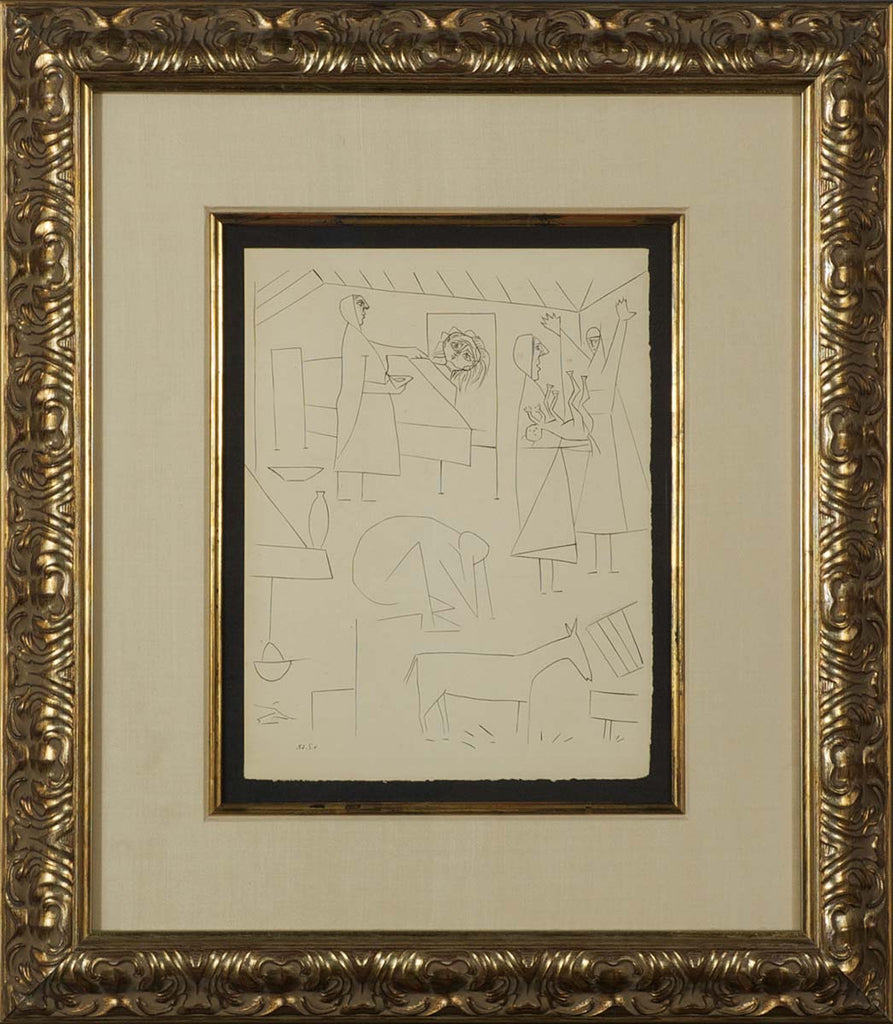Upload a photo of your space
For best results we recommend marking 10 inches on your wall with tape to get a sense of scale. Make sure to have the floor visible in the photo.


About the Work
Spanish painter Pablo Picasso was one of the greatest and most influential artists of the 20th century, as well as the co-creator of Cubism. “Naissance du Petit Centaure (Dos Contes, B.468)” is an engraving. The image size is 13 x 10 – inches.“Naissance du Petit Centaure (B.468)” is an engraving by Pablo Picasso printed in 1947 in a limited edition of 270 as part of the Dos Contes suite. Dos Contes was a work by Picasso's childhood friend Ramon Reventos who died prematurely in 1923. Picasso greatly admired Reventos' humorous style and published this portfolio in 1947 hoping to revive interest in Reventos' writing.
Before the age of 50, the Spanish born artist had become the most well-known name in modern art, with the most distinct style and eye for artistic creation. There had been no other artists, before Picasso, who had such an impact on the art world, or had a mass following of fans and critics alike, as he did.
Pablo Picasso remains renowned for endlessly reinventing himself, switching between styles so radically different that his life's work seems to be the product of multiple great artists rather than just one.
About the Artist
Pablo Ruiz Picasso was born on October 26, 1881, in Malaga, Spain. His father was a professor in the School of Arts and Crafts and often took him to bullfights which would influence much of his art throughout his career. It is said that Picasso learned to draw before he could speak. Picasso studied the works and styles of many Spanish artists including Francisco Goya, El Greco, and Diego Velázquez. At the beginning of the 1900s, Picasso moved to Paris, France to open his own studio. He was lonely and depressed after the death of a close friend, which ignited what is now known as his “Blue Period”. A few years later, Picasso started the “Rose Period”, which introduced warmer colors to his works. Picasso is commonly known as the pioneer of Cubism, in which objects are broken apart and reassembled in an abstracted form; it is destructive and creative. Cubism shocked, appalled and fascinated the art world.
Please utilize the AR experience in a well-lit room.
Scan the room for surface detection.

Artwork will place in your room.
Using your fingers, align the horizontal white line
with your floor.

Double tap the artwork to scale to 100% size
and pinch to move on the screen.










